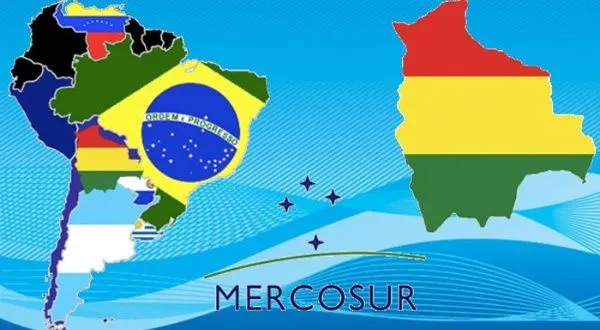Today marks a significant expansion for Mercosur as Bolivia becomes its newest member.
This addition brings the total number of countries in the bloc to five, alongside Argentina, Brazil, Paraguay, and Uruguay.
Bolivia’s entry into Mercosur enriches the bloc with its vast natural resources, including significant deposits of lithium and natural gas.
Additionally, Bolivia offers a strategic geographic link between South American nations, potentially enhancing trade routes and connectivity within the continent.
The confirmation occurred at the 63rd Mercosur Summit in Rio de Janeiro, Brazil.
Here, leaders from the five countries signed the protocol that officially welcomes Bolivia into the group.
Bolivian President Luis Arce shared his joy on social media, celebrating Bolivia’s full integration into Mercosur

Brazil’s President, Luiz Inácio Lula da Silva, highlighted the importance of this event. He noted it as a step towards connecting the Atlantic and Pacific regions.
President Silva also mentioned upcoming meetings with ministers from all member nations.
These meetings will focus on using funds to strengthen the physical connections between the countries.
The journey to this moment began in 2015. Since then, Argentina, Uruguay, and Paraguay have already approved Bolivia’s membership.
Brazil was the final country to give its endorsement. This decision came after the Brazilian Senate’s approval in late November.
With Bolivia’s entry, Mercosur now represents a larger community. This includes 300 million people across an area of 13.8 million square kilometers.
Additionally, the bloc’s combined Gross Domestic Product (GDP) is now around 3.5 trillion dollars.
This expansion demonstrates Mercosur’s growing influence and connectivity in the region.
Background
Comparing Mercosur with other trade blocs sheds light on its growing importance. The European Union (EU), for example, consists of 27 countries.
It covers a smaller area but has a much larger population of about 447 million. The EU’s GDP, at approximately 15 trillion dollars, far exceeds that of Mercosur.
However, Mercosur’s recent expansion shows its potential for growth and influence in global trade.
Another significant bloc is the Association of Southeast Asian Nations (ASEAN). ASEAN unites ten countries in Southeast Asia.
It represents over 650 million people but has a smaller GDP than Mercosur, at around 3 trillion dollars.
ASEAN’s focus on regional connectivity mirrors Mercosur’s goals with Bolivia’s inclusion.
The North American Free Trade Agreement (NAFTA), now replaced by the USMCA, links the United States, Canada, and Mexico.
This bloc, with a combined GDP of about 24.8 trillion dollars, stands out for its economic power. However, Mercosur’s approach differs, focusing more on regional integration rather than just trade.
Lastly, the African Continental Free Trade Area (AfCFTA) is a promising trade bloc. It aims to connect 55 African countries, representing over 1.3 billion people.
Although it’s in its early stages, AfCFTA’s potential for economic transformation is immense.
Mercosur’s steady growth and Bolivia’s entry could offer insights for such emerging trade blocs.

